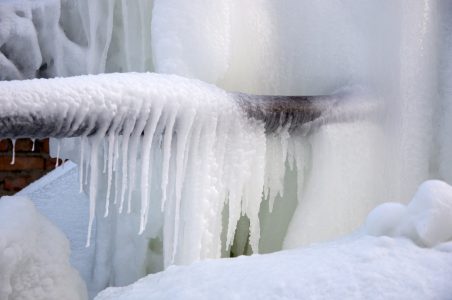Safeguarding Pipes from Cold Weather Damage: Essential Tips
Safeguarding Pipes from Cold Weather Damage: Essential Tips
Blog Article
Here down the page you will find a lot of good details about Preventing and dealing with frozen pipes.

Winter can damage your pipes, particularly by freezing pipes. Below's just how to avoid it from happening and what to do if it does.
Intro
As temperatures drop, the threat of frozen pipelines increases, possibly bring about expensive fixings and water damage. Understanding exactly how to prevent icy pipelines is essential for homeowners in chilly climates.
Prevention Tips
Shielding prone pipes
Wrap pipes in insulation sleeves or use warmth tape to protect them from freezing temperatures. Focus on pipelines in unheated or outside areas of the home.
Home heating strategies
Keep interior rooms sufficiently warmed, especially areas with plumbing. Open up cupboard doors to enable warm air to circulate around pipes under sinks.
Exactly how to recognize frozen pipelines
Search for lowered water circulation from taps, uncommon odors or noises from pipelines, and noticeable frost on revealed pipes.
Long-Term Solutions
Architectural modifications
Consider rerouting pipes far from exterior wall surfaces or unheated areas. Add additional insulation to attic rooms, basements, and crawl spaces.
Upgrading insulation
Buy top notch insulation for pipelines, attic rooms, and walls. Proper insulation helps preserve consistent temperature levels and minimizes the risk of frozen pipes.
Safeguarding Outside Plumbing
Yard hoses and outside taps
Detach and drain pipes yard pipes prior to winter months. Set up frost-proof spigots or cover exterior taps with protected caps.
Recognizing Icy Pipes
What causes pipes to ice up?
Pipelines ice up when revealed to temperatures below 32 ° F (0 ° C) for extended durations. As water inside the pipes freezes, it expands, putting pressure on the pipeline wall surfaces and potentially triggering them to break.
Threats and problems
Frozen pipelines can cause water system interruptions, building damages, and pricey repair services. Burst pipes can flooding homes and cause considerable structural damages.
Indicators of Frozen Pipeline
Determining icy pipes early can prevent them from bursting.
What to Do If Your Pipes Freeze
Immediate actions to take
If you presume icy pipes, maintain taps open up to alleviate stress as the ice melts. Make use of a hairdryer or towels taken in hot water to thaw pipelines slowly.
Final thought
Avoiding icy pipelines calls for aggressive procedures and quick reactions. By recognizing the causes, signs, and preventive measures, property owners can safeguard their plumbing during winter.
5 Ways to Prevent Frozen Pipes
Drain Outdoor Faucets and Disconnect Hoses
First, close the shut-off valve that controls the flow of water in the pipe to your outdoor faucet. Then, head outside to disconnect and drain your hose and open the outdoor faucet to allow the water to completely drain out of the line. Turn off the faucet when done. Finally, head back to the shut-off valve and drain the remaining water inside the pipe into a bucket or container. Additionally, if you have a home irrigation system, you should consider hiring an expert to clear the system of water each year.
Insulate Pipes
One of the best and most cost-effective methods for preventing frozen water pipes is to wrap your pipes with insulation. This is especially important for areas in your home that aren’t exposed to heat, such as an attic. We suggest using foam sleeves, which can typically be found at your local hardware store.
Keep Heat Running at 65
Your pipes are located inside your walls, and the temperature there is much colder than the rest of the house. To prevent your pipes from freezing, The Insurance Information Institute suggests that you keep your home heated to at least 65 degrees, even when traveling. You may want to invest in smart devices that can keep an eye on the temperature in your home while you’re away.
Leave Water Dripping
Moving water — even a small trickle — can prevent ice from forming inside your pipes. When freezing temps are imminent, start a drip of water from all faucets that serve exposed pipes. Leaving a few faucets running will also help relieve pressure inside the pipes and help prevent a rupture if the water inside freezes.
Open Cupboard Doors
Warm your kitchen and bathroom pipes by opening cupboards and vanities. You should also leave your interior doors ajar to help warm air circulate evenly throughout your home.

I discovered that article on 6 Ways to Prevent Frozen Pipes when doing a lookup on the internet. Enjoyed reading our piece? Please share it. Help others discover it. Thank you for your time spent reading it.
Visit Our Website Report this page